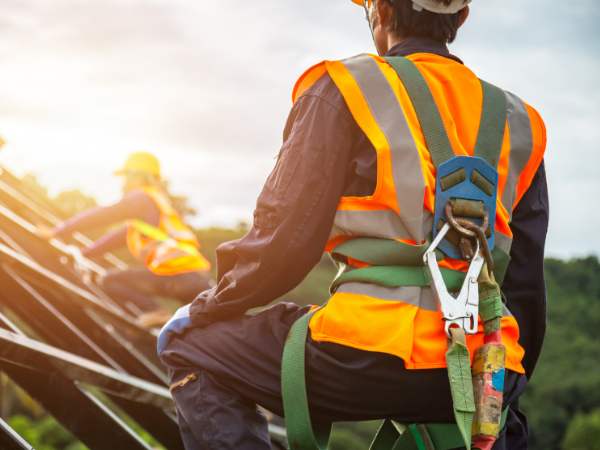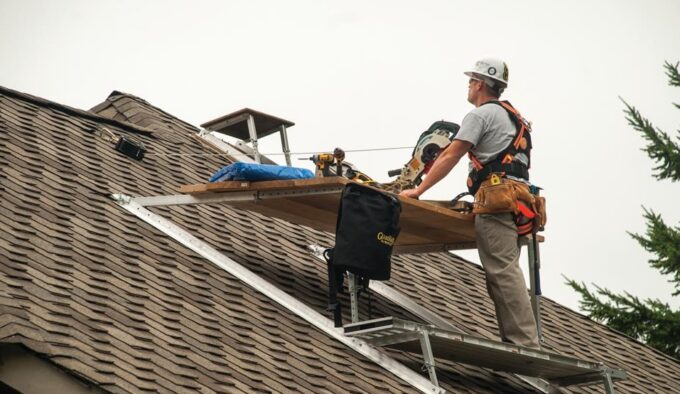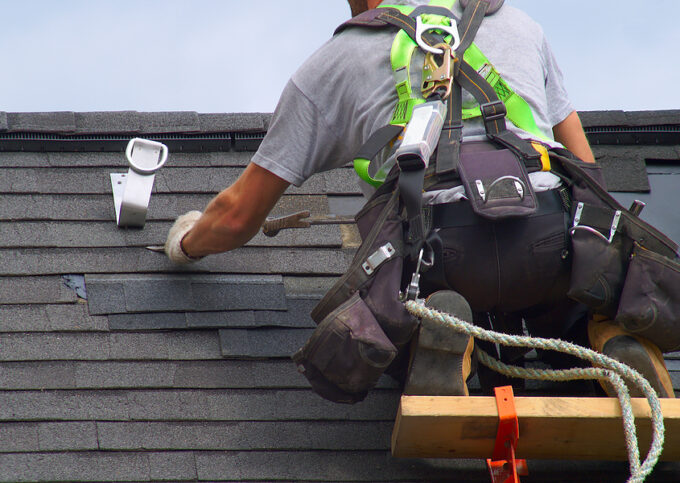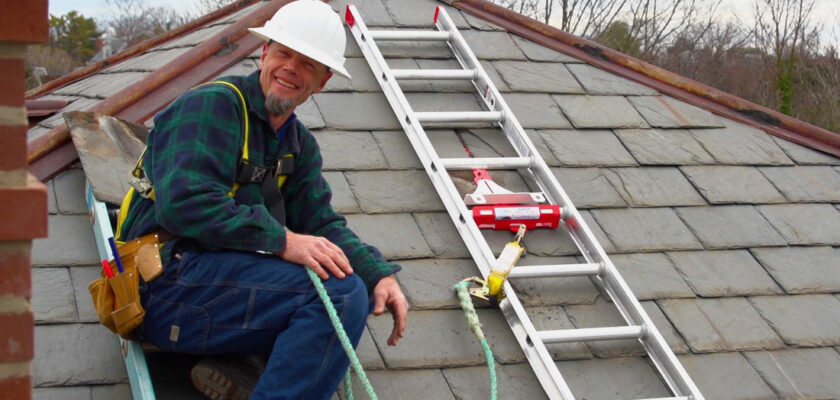If you’ve ever dreamed of becoming a roofer, you know that it’s a physically demanding job that requires special skills and safety precautions. But what exactly do roofers use to stay safe while they work? They have to be mindful of their own safety and the safety of others when they’re up on the roof. In this blog post, we’ll discuss what kind of safety equipment roofers need and why it’s important. We’ll also provide some tips on how to ensure your own safety when working with or around rooftops. Read on for more information about staying safe in the world of roofing!
Types of Safety Equipment Used By Roofers

Source:pinterest.com
There are many different types of roof safety equipment that roofers can use to keep themselves safe while working. Some of the most common pieces of safety equipment include fall protection gear, gloves, eye and face protection, and hard hats.
Fall protection gear is essential for any roofer, as it helps to prevent injuries if a fall should occur. There are many different types of fall protection gear available, such as harnesses, lanyards, and anchor points. Gloves are also important for protecting roofers’ hands from cuts and scrapes, as well as keeping them warm in cold weather. Eye and face protection is crucial for preventing injuries from falling debris or chemicals. Hard hats are worn to protect roofers’ heads from impact in case of a fall or collision with an object.
How to Stay Safe While Working on a Roof?

Source:facebook.com
Here are some tips for staying safe while working on a roof:
– Wear the proper safety gear: Roofers should always wear hard hats, gloves, and boots with nonslip soles. It’s also important to wear eye protection, since there’s a risk of nails and other debris flying up into the air.
– Be aware of your surroundings: It’s important to be aware of your surroundings at all times while working on a roof. This means being aware of things like power lines and weather conditions.
– Use caution when working around skylights: Skylights can be especially dangerous, so it’s important to use caution when working around them. Be sure to cover them with plywood or another sturdy material before walking on them.
– Don’t work alone: It’s always best to have someone else with you when working on a roof, in case of an accident. If you must work alone, be sure to let someone know where you are and when you expect to be done.
– Follow safety protocols: Be sure to follow all safety protocols set forth by your employer. This includes things like using fall protection equipment and not climbing higher than you are trained to.
– Be sure to inspect the roof: Before beginning any work on the roof, be sure to inspect it for any structural damage or debris. This will help ensure that the roof is safe to work on and reduce the risk of injury.
Wrapping Up

Source:pinterest.com
Roofers have to use a variety of safety equipment in order to ensure they stay safe while completing their job. This includes items such as hard hats, harnesses, goggles and protective clothing. It is important that roofers are aware of the dangers posed when on a roof and understand how to safely operate their equipment in order to minimize the risk of injury or death. By following these safety procedures, roofers can be sure that they will remain safe during any job.

